Daffy About Taffy🍬 in Galveston
And other foodie, fishy🐠 and waterlogged 🌊 tales from the Gulf island

One of the most joyous parts of visiting Galveston a few weeks ago was watching Juan (“Just call me the Taffy Man”) shape a 40-pound slab of candy into a rope that looked like a live green-striped yellow snake, then feed it into an ancient machine that converted the “snake” into little wrapped pieces of pineapple-flavored salt water taffy. Even though this is something he does every day at La King’s Confectionery and Ice Cream Parlour, Juan did it with a smile as an audience of visitors looked on in interest, reaching out to catch the pieces of candy he tossed like tiny missiles into the crowd. I could have watched him for hours. (See videos below.)
But there was more to see on this fascinating island. But first, just in case reading about Galveston brings a particular song to mind—you know the one, “Galveston,” written by Jimmy Webb and popularized by Glen Campbell—here it is. Hopefully it won’t get stuck in your head—or perhaps you’ll be happy if it does!
A reluctant visitor
When my husband said we’d been invited to visit Galveston, Texas, my first reaction was, “I’m not interested.” All I knew of the place was that there had been a horrific hurricane there in 1900 that was still classified as the deadliest natural disaster in U.S. history, and that it was in Texas some forty-odd years ago that I did a 360° spin on an icy highway while driving through the Panhandle on a cross-country trip. I still held that traumatic incident against the state.
But Jeff is nothing if not persistent, and his travel show on Scripps TV and YouTube (check out the latest episode here!) had earned him an invitation to visit the island from the Galveston tourism people. In addition, he needed a cameraperson. How could I say no? Anyway, it was only for four days.
Of course I had a blast. Even with a spell of unseasonably cold weather, there was so much to see, do, eat—and learn. And the people were as welcoming as could be—as though a couple of curious, camera-wielding Californians were just what they’d been waiting for.
In case you missed it, I wrote about Galveston's love affair with Mardi Gras a few days back.
But we discovered many more reasons than Carnival season to enjoy this place, which is both a city and slender barrier island about 30 miles long and not quite three miles across at its widest point. It sits in the Gulf of Mexico (as that body of water has been called for more than 400 years and is still in the rest of the world!). Only about 50 miles southeast of Houston, it sometimes feels like a world away from the rest of Texas to locals and visitors alike.
“We’re two miles off the coast of Texas,” says J.R. Shaw, host of a popular local history podcast, Galveston Unscripted, who was our indispensable guide on the first day of our visit. “We call it the Republic of Galveston for a reason. It’s its own thing.”
Here’s some of what we saw.
A few points of interest
•Victorian mansions and neighborhoods: There are numerous impressive and historic ones, many refurbished survivors of the 1900 hurricane and the flood that killed an estimated 8,000 people out of a population of about 38,000. Driven by winds of up to 140 mph, a wall of water some 15 feet high washed over the island, which was only nine feet above sea level, and destroyed two-thirds of it.

The city that exists today is a result of the response to this disaster which led to the building of a 10-mile sea wall of 17 feet high and the raising of much of Galveston itself by about 20 feet through a process of lifting the houses and pouring mud underneath. You can find many restored Victorian homes with markers stating that they survived the 1900 storm. And you’ll see some newer constructions that look like they’re on stilts.


•A seaside pier: There are carnival rides, games, and souvenir and snack shops at the Pleasure Pier. It opened in 2012, replacing another very popular pier that was wiped out by Hurricane Carla in 1961. (Seeing a pattern here? A lot of hurricanes, destruction and stories of survival!).
•A historic downtown street: The Strand was once known as the Wall Street of the Southwest at a time when Galveston was an influential seaport with the highest per capital income in the country. That was before the 1900 hurricane when Galveston had street cars, opera houses, banks and hotels.
At that time, it was also a kind of a southwestern Ellis Island and “a melting pot of cultures, classes, races, religions and ethnicities,” according to an exhibit at the Rosenberg Library Museum. These days, The Strand bustles with visitors, tourists and retail businesses—including a great confectionery that’s almost 100 years old called La King’s (see below!).
•The birthplace of a holiday: Galveston—specifically a site on The Strand that’s marked with a historic mural—is also the place where Juneteenth began on June 19, 1865. It’s there that slaves in Texas finally learned that they were free. At first called Emancipation Day, Juneteenth became a state holiday in Texas in 1979 and a national holiday on June 17, 2021 when President Joe Biden signed the Juneteenth National Independence Day Act into law.
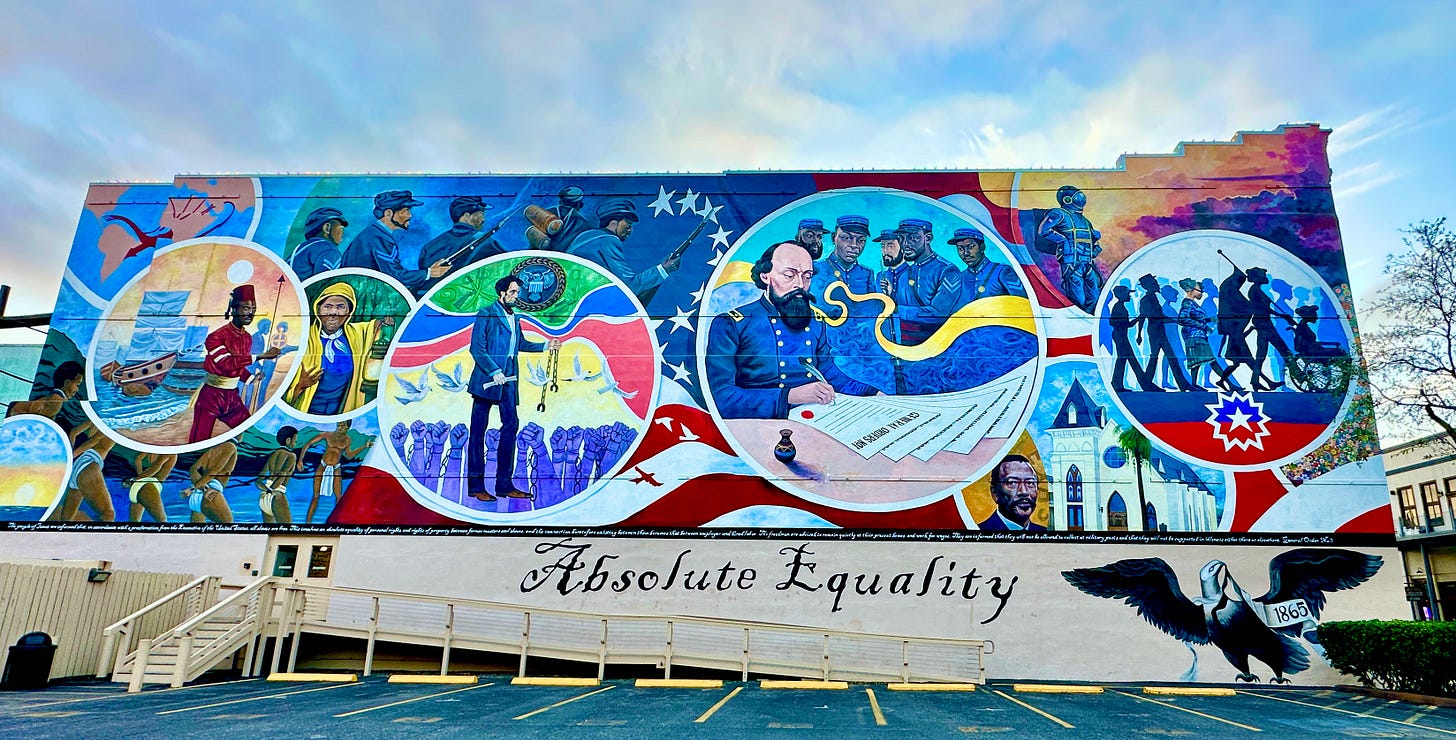
•Something fishy: About a block from The Strand is a busy port where you can stare at cruise ships docked for the day or walk to another pier and watch the fishing boats unloading the day’s fresh catch, then sample it at your choice of restaurants along the water. We dined at Katie’s Seafood House.

Katie’s has a seafood market right next door, where J.R. Shaw shared his love of alligator meat, especially turned into meatballs!
•Creature comfort: We also visited an aquarium inside a glass pyramid at Moody Gardens with the cutest collection of penguins you ever saw (plus seals, sharks, jellyfish and more) and another pyramid nearby that contained a replica of a rainforest).
Note: If this post cuts off too soon, click on “View entire message” to see the rest.
What we ate
As my picky husband will not touch fish, I was the lucky one who got to sample the elaborate “chef’s recommendation” at Katie’s Seafood House, described as “Pecan-Crusted Red Snapper + Gulf Jumbo Shrimp topped with Texas shrimp sauce with mixed peppers and cherry tomatoes, served with garlic butter fingerling potatoes and grilled mixed veggies.”
How was it? A symphony of tastes that made harmonious music in my mouth. (Is that a bit too cute? Okay, it was just scrumptious!) Topping it off with key lime pie was quite the encore! I do think the freshness of the fish makes all the difference—it practically waltzed on my tongue! Oh dear…
Other outstanding food experiences in Galveston (mostly seafood-themed!) included a Cajun mango salad with blackened tuna at Yaga’s Cafe on The Strand (the outdoor area seemed like it would be a treat on a warm afternoon); two tasty meals at a restaurant called Fancy at Hotel Lucine, our updated and quite charming midcentury modern accommodations, plus the most delightful morning experience chatting with locals at the lobby coffee bar.

Then there was an outstanding lunch at Maceo Spice and Import Co., where owner Concetta Maceo Sims treated us to what was probably the best meatball I ever had, with cheese oozing out of the center.

We also sampled several of the restaurant’s signature dishes, including red beans and rice, muffaletta, and a shrimp and crab gumbo. All were really, really good. All my resolutions to be a nice kosher Jewish girl and avoid shellfish and pork didn’t hold; the food was just too tempting.
Although Concetta (pronounced “Con-setta” because she’s from Texas), loves to cook and shares recipes on the restaurant website, they don’t include any of the dishes on her menu. Those are family dishes that combine her two cherished heritages—Sicilian on her father’s side and New Orleans Cajun on her mother’s. Now I’m on a mission to try to learn to make muffaletta, described on the menu as “ham, salami, provolone and olive salad on a sesame seed bun, served steamed at room temperature.” Learning to make red beans and rice and gumbo are on the cooking bucket list as well. It’s a tall order.
And finally….taffy!
Visiting La King’s Confectionery and Ice Cream Parlour is like stepping back in time—maybe as far back as 1927, which is when the father of current owner, Jack King, started making candy in Houston. Jack, his oldest son, moved the business to The Strand in Galveston in 1976 and created an old-fashioned confectionery, complete with a 1920’s soda fountain serving malts, shakes, ice cream sodas, sundaes, splits, floats and other fountain treats.

Jeff, a certified chocoholic, immediately became addicted to the chocolate soda, a simple mixture of vanilla ice cream, soda water and chocolate syrup, with a spritz of whipping cream on top.
As for me, I walked to the back of the store and saw the taffy spinning around on metal rods like a giant skein of sticky yarn and started talking to Juan, who told me to call him Taffy Man. “It’s way easier.”
For more of these interviews and to watch the process of making taffy, click on the following three videos.
After Juan pulled the sticky taffy off the rods, he gathered it into a massive yellow slab weighing 40 pounds—talking to me as he was doing it.
The job is hard, heavy work, he told me, but he loves it, even after 11 years.
“That 40 pounds is going to produce 3,000 pieces,” he says. It’s all cut and wrapped by a machine that’s 111 years old. The store sells 30 flavors, with 21 of them constant and the others seasonal. Pineapple is one of the latter. It is only sold from February until September. Coconut is one that goes out of stock in February and comes back again in September.
Ingredients in taffy are usually some combination of sugar, cornstarch, corn syrup, glycerine, water, butter, salt, natural and/or artificial flavor, and food color. There is a bit of salt, but certainly not the amount that would be in seawater. So why is it called salt water taffy? There’s a cute story that probably started in Atlantic City, New Jersey in the 1880s—the place where taffy originated—that a wave of salt water from the sea washed over a batch of candy and then someone started calling it salt water taffy, and the name stuck. Here’s a link to one version of the salt water taffy story.
And here’s more of my conversation with Juan, the Taffy Man in which he tells me that aside from making taffy, he loves to cook, and his favorite thing to make is beans.
Are you a salt water taffy fan? Do you have fond memories of eating it—or do you prefer chocolate? I’d love to hear from you in comments.
And that’s it for our visit to Galveston, except for a shoutout to MaKlay Simon, a friend of J.R. Shaw whom we ran into while walking around the East End Historic District of Galveston, an area filled with beautiful Victorians. .
“Hey, how are you?” J.R. asked. “ Would you like to be on a TV show?”
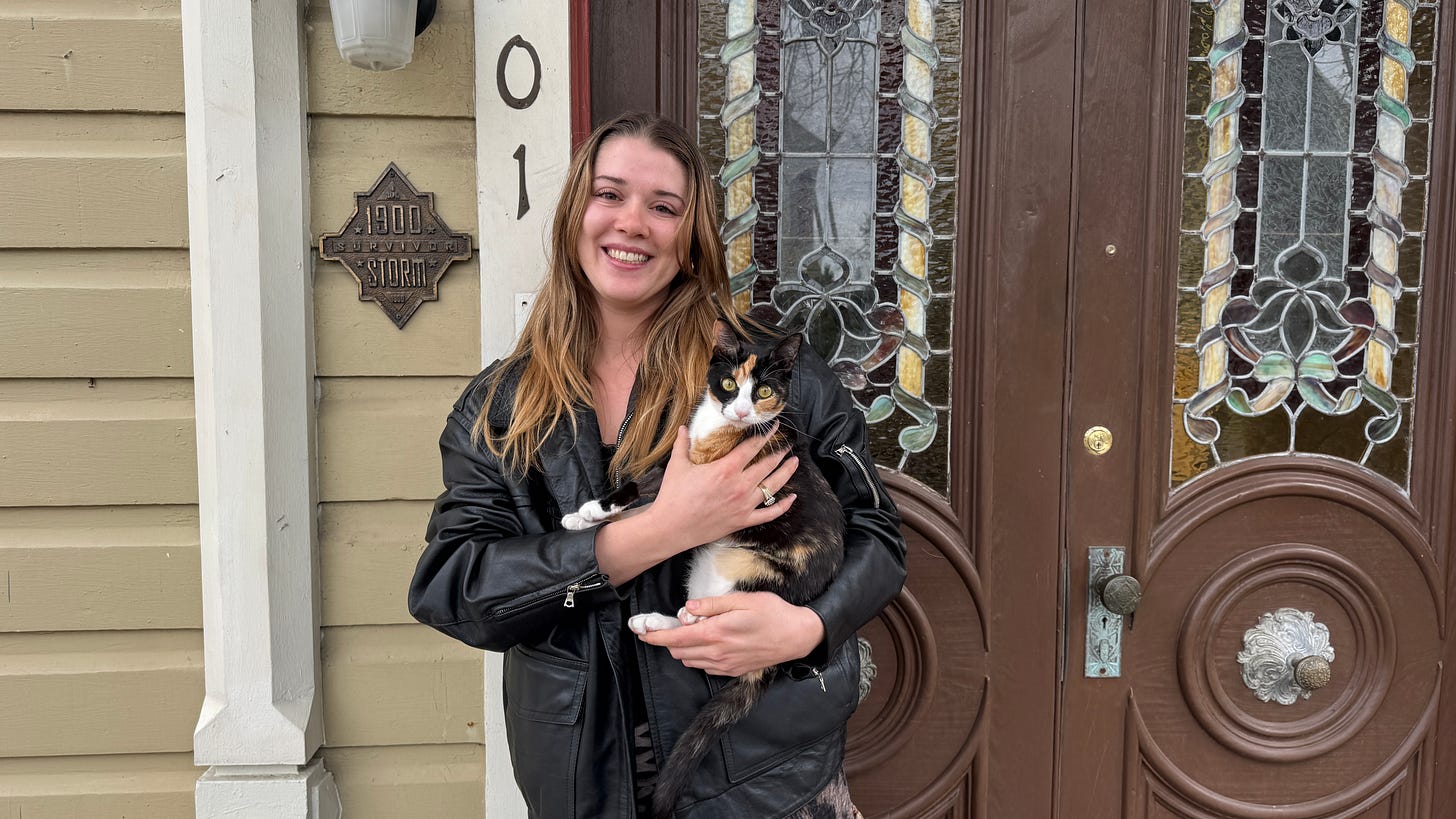
“Yes!” said MaKlay and invited us in to see her first-floor apartment in an 1889 Victorian. It was splendid, homey and spacious, with Fräulein, her cute calico kitty, adding to the ambiance. I bonded with Maklay over recipes and her love of cooking. She shared a family recipe for buttermilk pancake syrup. I’m going to give it a try—and maybe share it later!
Until then, thanks, MaKlay and Galveston for showing us such warm hospitality!
Thanks also to everyone for subscribing, sharing and commenting. Please don’t forget to click the “like” button to help others find their way here.
See you soon. Try to stay cool and hopeful. There are good people in the world. I’ve met some of them.
❤️Ruth
P.S.: Be sure to check out Jeff’s excellent PhotowalksTV episode about Galveston below:






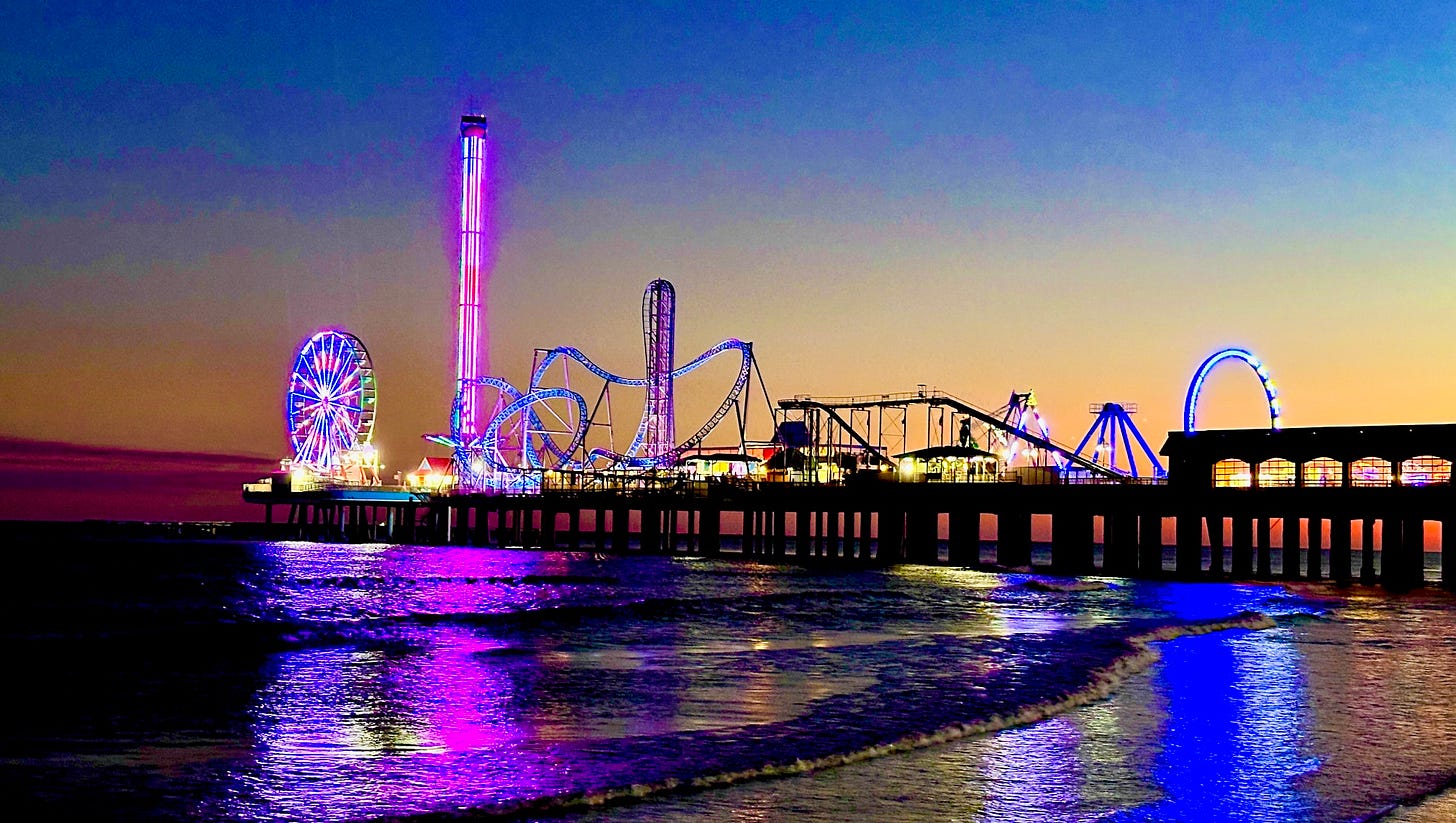
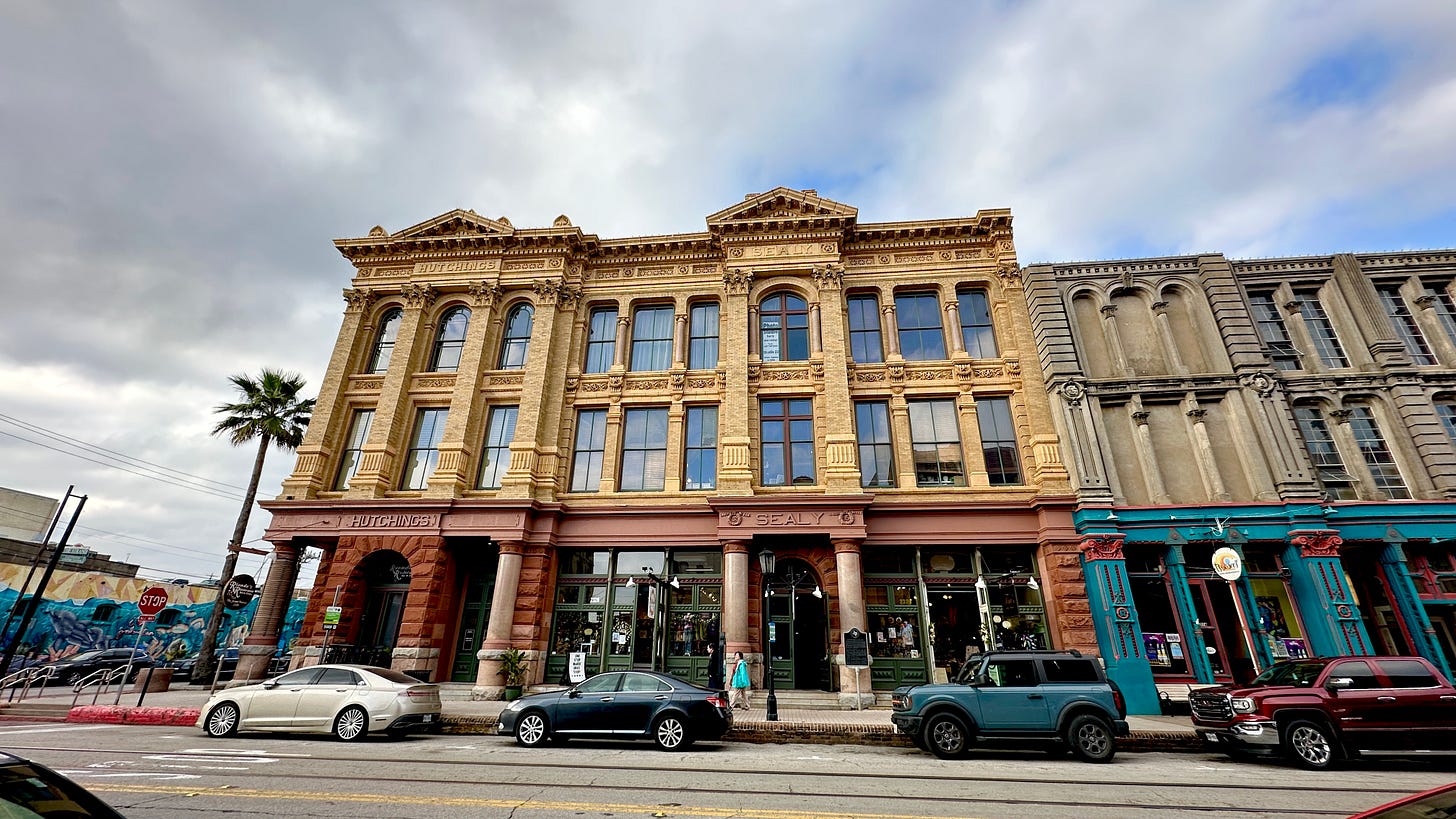
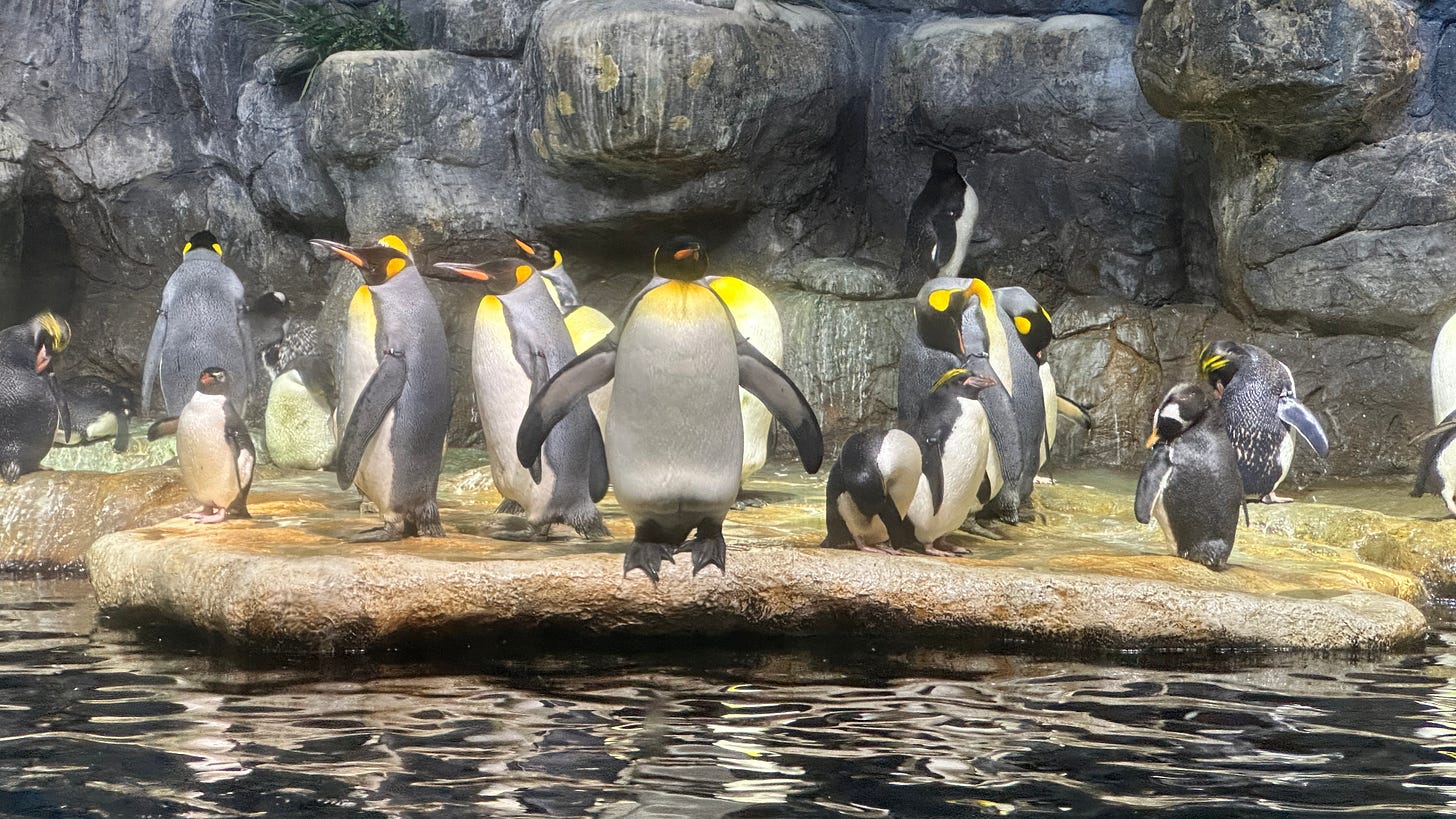

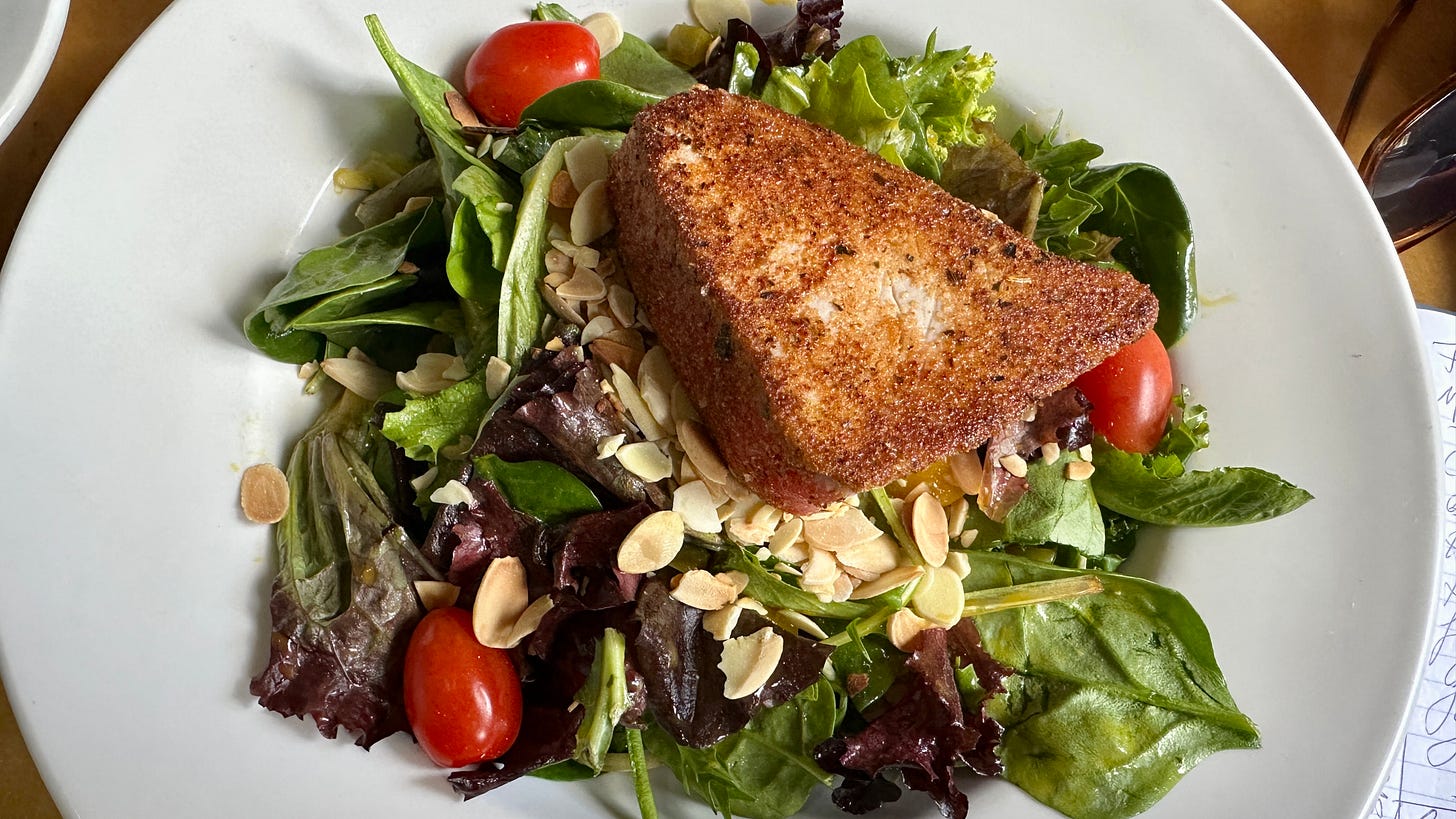
My grandparents always bought us salt water taffy when they visited Atlantic City. Thank you for sharing so much history and good eats. The Sunflower House looks spectacular! I enjoyed the video and your on-the-spot interview, Ruth! The Taffy Man is sure getting a good workout!
How interesting!! I never knew what Galveston was like and that taffy does appear to be a live yellow and green snake!! 😂